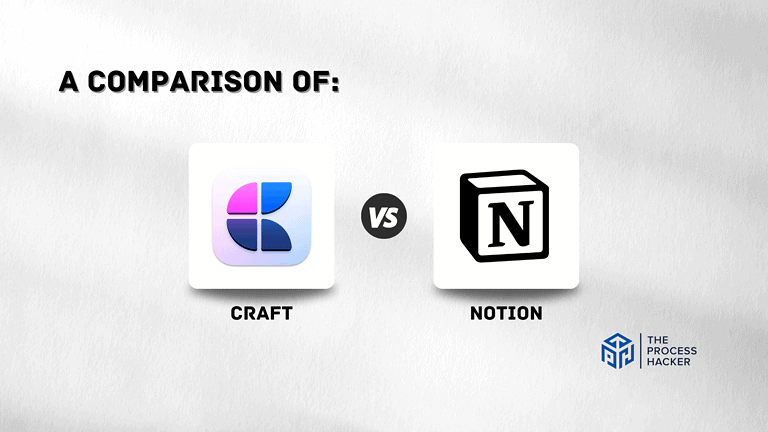How to Manage a Small Business: A Comprehensive Guide for Entrepreneurs
Did you know that small businesses account for 99.9% of all companies in the United States? These statistics highlight the immense importance of small businesses in our economy.
However, to sustain this vital role, entrepreneurs must adopt effective management practices to overcome challenges. Running a small business is a thrilling rollercoaster ride—full of highs, lows, unexpected twists, and exhilarating turns.
It’s a testament to your entrepreneurial spirit, resilience, and unwavering belief in your dreams. But let’s face it: in today’s fast-paced, ever-evolving business landscape, managing a small business is no walk in the park.
This comprehensive guide will delve into the key aspects of managing a small business today!
What is Small Business Management?
Small business management refers to the process of planning, organizing, leading, and controlling the resources and operations of a small business to achieve its objectives efficiently and effectively.
As we look forward, understanding and implementing solid small business management practices become increasingly important. This field encompasses a range of activities, including strategic planning, financial management, human resources, marketing, and customer relations, all aimed at fostering business growth and sustainability.
Small business management also means leveraging technology and modern methodologies to streamline processes, enhance communication, and maximize productivity. This involves not only managing day-to-day operations but also anticipating future trends and challenges, adapting to changing economic conditions, and sustaining competitive advantage in a rapidly evolving market.
Why You Should Master Small Business Management
Think of mastering small business management as unlocking a treasure chest full of benefits for your venture. When you’re in control, everything else seems to fall into place more easily.
First and foremost, effective management is the cornerstone of business success. It’s what separates thriving companies from those struggling to stay afloat. When you have a solid grasp of management principles, you’re able to steer your business toward greater profitability and sustainable growth.
Let’s delve into some specific advantages that come with honing your management skills:
1) Increased Profitability and Growth
When you manage resources wisely and make informed decisions, you optimize your operations for maximum efficiency and profitability. This creates a solid foundation for growth and expansion.
2) Better Decision-Making and Problem-Solving
Management skills equip you with the tools to analyze situations critically, weigh your options, and make sound decisions even under pressure. You’ll become a more effective problem-solver, able to navigate challenges with confidence.
3) Improved Employee Satisfaction and Retention
Great management fosters a positive work environment where employees feel valued and motivated. This translates to higher job satisfaction, reduced turnover, and a more productive team.
4) Enhanced Adaptability in a Rapidly Changing Market
The business world is constantly evolving, and successful companies are those that can adapt quickly. Effective management allows you to stay ahead of the curve, anticipate market trends, and pivot your strategies as needed.
5) Stronger Competitive Advantage
In today’s competitive landscape, having a well-managed business gives you a distinct edge over your rivals. You’ll be better equipped to attract customers, retain talent, and outperform the competition.
Mastering small business management isn’t just about surviving—it’s about thriving. It’s about transforming your business from a good one to a great one. It’s about realizing your full potential as an entrepreneur and building a lasting legacy.
How to Manage a Small Business: The Ultimate 10-Step Process
Alright, let’s roll up our sleeves and get into the nitty-gritty. I will walk you through a comprehensive, 10-step process for managing your small business effectively. This isn’t some theoretical mumbo-jumbo – it’s a practical, actionable roadmap you can implement immediately.
Think of this as your master plan. It covers everything from setting a clear vision to tracking your progress and making adjustments along the way.
It’s about creating a solid foundation for your business and ensuring you’re equipped to handle whatever challenges come your way.
1. Craft Your Business Compass: Develop a Solid Business Plan
Every successful journey begins with a map, and in the business world, that map is your business plan. It’s your compass, guiding you towards your destination while helping you navigate any unexpected detours. A well-structured business plan lays the groundwork for success, providing a clear roadmap for your venture.
Think of it as the blueprint for your business. It outlines your goals, strategies, and financial projections, providing a comprehensive overview of your vision and how you plan to achieve it. It’s not just a document for investors or lenders – it’s an invaluable tool for you as a business owner.
Here are some key components to include in your business plan:
- Executive Summary: A concise business overview, including your mission statement, products or services, target market, and key financial highlights.
- Company Description: A detailed description of your business, its legal structure, ownership, history, and any unique advantages you possess.
- Market Analysis: An in-depth look at your industry, target market, competition, and potential customers. This helps you understand your operating landscape and identify growth opportunities.
- Products and Services: Clearly explain what you offer, its unique value proposition, and how it addresses customer needs.
- Marketing and Sales Strategy: Your plan for reaching your target audience, generating leads, and converting them into paying customers.
- Management and Operations: An overview of your team, their roles and responsibilities, and how you’ll manage day-to-day operations.
- Financial Projections: A detailed forecast of your expected income, expenses, and profitability over the next few years. This helps you track your progress and make informed financial decisions.
Remember, your business plan isn’t set in stone. It’s a living document that should be reviewed and updated regularly as your business evolves. The key is to create a flexible and adaptable plan, allowing you to pivot when needed while staying true to your core vision.
By investing time and effort into crafting a solid business plan, you set yourself up for success. You’ll have a clear direction, a deeper understanding of your market, and a roadmap for achieving your goals.
2. Master the Money Game: Financial Management Essentials
Think of your business finances as the lifeblood that keeps your operations running smoothly. Without a solid grasp of the numbers, you’re essentially flying blind. Mastering the money game is crucial for making informed decisions, ensuring profitability, and achieving long-term financial stability.
Understanding Cash Flow and Financial Statements
Cash flow is the movement of money in and out of your business. It’s essential to keep a close eye on your cash flow to avoid running out of funds and ensure you have enough to cover expenses, invest in growth opportunities, and weather any unexpected financial challenges.
Familiarize yourself with financial statements such as the balance sheet, income statement, and cash flow statement. These documents provide a snapshot of your business’s financial health and performance.
Budgeting and Forecasting Techniques
Creating a realistic budget is like setting a course for your financial journey. It helps you allocate resources effectively, track your spending, and identify areas for improvement.
Forecasting involves predicting your future financial performance based on current trends and anticipated changes. This allows you to plan ahead, make strategic decisions, and secure funding if needed.
Here are some additional business management tips to handle your finances effectively:
- Separate Personal and Business Finances: Maintain separate bank accounts and credit cards for your business to avoid confusion and streamline accounting.
- Track Expenses Diligently: Use accounting software or spreadsheets to record all income and expenses. Categorize them properly to gain insights into your spending patterns and identify areas for cost savings.
- Invoice Promptly and Follow-Up on Payments: Don’t delay sending invoices to clients. Set clear payment terms and follow up on overdue payments to maintain a healthy cash flow.
- Review Financial Statements Regularly: Analyze your financial statements at least monthly to track your performance, identify trends, and make adjustments as needed.
- Seek Professional Advice When Needed: Consult with an accountant or financial advisor for expert guidance on complex financial matters, tax planning, and investment strategies.
3. Build Your Dream Team: Human Resource Management
Your employees are the heart and soul of your business. They’re the ones who interact with customers, bring your vision to life, and ultimately drive your success. Effective human resource management is about building a dream team that’s not only talented but also engaged, motivated, and aligned with your company’s values.
Let’s explore some strategies for attracting, developing, and retaining top talent:
Hiring the Right People
The hiring process is more than just filling a vacant position. It’s about finding individuals who possess the skills, experience, and cultural fit to thrive in your organization.
Take the time to craft clear job descriptions, conduct thorough interviews, and check references to ensure you’re making the right choices.
Onboarding and Training
First impressions matter, so make sure new hires feel welcomed and supported from day one. Provide comprehensive onboarding and training programs to equip them with the knowledge and skills they need to succeed in their roles.
Performance Management
Set clear expectations, provide regular feedback, and conduct performance reviews to help employees grow and develop. Recognize and reward achievements to boost morale and encourage high performance.
Employee Engagement
Create a positive work environment where employees feel valued and appreciated. Offer opportunities for professional development, promote work-life balance, and foster a culture of open communication and collaboration.
Compensation and Benefits
Offer competitive salaries and benefits packages to attract and retain top talent. Consider implementing performance-based incentives or profit-sharing programs to reward exceptional contributions.
Succession Planning
Develop a plan for identifying and developing future leaders within your organization. This ensures a smooth transition when key employees leave or retire and helps maintain continuity in your business operations.
Building a strong company culture is also essential for attracting and retaining valuable employees. Define your core values, communicate them clearly, and lead by example. Encourage teamwork, celebrate successes, and foster a sense of belonging among your team members.
4. Streamline Your Operations: Efficient Business Processes
Efficiency is the name of the game in today’s fast-paced business world. Streamlining your operations can save you time, money, and resources, freeing you up to focus on what matters most – growing your business. It’s about working smarter, not harder.
Streamlining operations is pivotal in managing a small business efficiently. By honing the core processes, you can dramatically enhance your business’s overall productivity and profitability.
Identifying and optimizing key business operations
Start by mapping out all your business processes from end to end. Identify bottlenecks, redundancies, and inefficiencies that are slowing you down. Once you pinpoint these areas, implement targeted improvements that could involve simplifying steps, integrating functions, or eliminating unnecessary tasks.
Implementing time-saving tools and technologies
Embrace technologies that automate repetitive tasks and streamline complex processes. Solutions like CRM systems, project management software, and automated accounting platforms can save you countless hours. These tools not only speed up operations but also reduce errors and free up your time to focus on strategic growth.
Here are some additional tips for streamlining your operations:
- Standardize Processes: Create clear procedures for key tasks to ensure consistency and efficiency. This minimizes errors and reduces the learning curve for new employees.
- Set Goals and Track Progress: Establish measurable goals for your operations and track your progress regularly. This helps you identify areas for improvement and celebrate successes.
- Embrace Continuous Improvement: Strive for ongoing improvement by seeking feedback from your team, customers, and suppliers. Be open to new ideas and willing to adapt your processes as needed.
Remember, operational efficiency isn’t a one-time fix. It’s an ongoing process of refining your systems, embracing technology, and empowering your team. By streamlining your operations, you’ll create a more productive and profitable business that’s poised for growth.
By focusing on these strategic areas, you can transform your business operations from cumbersome to streamlined, making every hour and resource count toward greater success.
5. Know Your Audience: Customer Relationship Management
Understanding and responding to customers’ needs are critical components of successful small business management. Effective customer relationship management (CRM) improves satisfaction and loyalty and boosts reputation and sales.
Strategies for understanding and meeting customer needs
Begin by gathering as much data as you can about your customers through surveys, social media interactions, and purchasing behaviors. Use this information to create detailed customer profiles that help predict needs and preferences.
Tailor your products, services, and marketing messages to meet the specific demands of different customer segments.
Building strong customer relationships
Consistent communication is key to building trust and loyalty. Keep your customers informed about new products, special offers, and company news. Personalize your interactions and show genuine appreciation for their business.
Regular touchpoints, such as thank you emails, birthday offers, and loyalty programs, can make customers feel valued and more likely to remain engaged with your brand.
Implementing effective feedback systems
Encourage and facilitate customer feedback through multiple channels, including email, social media, and your website. Make it easy for customers to provide their input, and show that you value their opinions by acting on their suggestions.
Regularly review feedback to identify areas for improvement and to better understand customer satisfaction. This loop not only enhances customer experience but also directly informs your business strategies.
6. Fuel Your Growth: Marketing and Sales Strategies
For any small business looking to expand its reach and revenue, a robust marketing and sales strategy is indispensable.
Developing a comprehensive marketing plan
Begin by setting clear, measurable goals based on your overall business objectives. Identify your target market and create detailed customer personas to tailor your marketing efforts. Assess your competitors and differentiate your offerings.
Your marketing plan should include a mix of strategies tailored to your audience, such as content marketing, SEO, and traditional advertising. Allocate a budget and outline a timeline for each campaign to track its effectiveness and ROI.
Leveraging digital marketing channels
In today’s digital age, having a strong online presence is crucial. Utilize social media platforms where your customers are most active to engage with them directly.
Invest in search engine optimization (SEO) to increase your visibility online and attract more organic traffic to your website. Consider pay-per-click (PPC) advertising for immediate traffic boosts and email marketing to nurture leads and keep your audience engaged with regular updates and offers.
Sales techniques for small businesses
Train your sales team on the nuances of relationship-based selling, which is particularly effective for small businesses. Focus on understanding the needs and challenges of your customers and how your products or services can solve them.
Implement upselling and cross-selling techniques to increase the average only business transactions. Always follow up with customers post-purchase to ensure satisfaction and encourage repeat successful business or referrals.
7. Stay Ahead of the Curve: Continuous Learning and Adaptation
In the fast-paced world of business, standing still is akin to moving backward. The landscape is constantly evolving, with new technologies, market trends, and customer expectations emerging at a rapid pace. To thrive in this dynamic environment, you need to cultivate a mindset of continuous learning and adaptation.
Embrace the Learning Journey
Staying updated with industry trends isn’t just a nice-to-have; it’s essential for remaining competitive and relevant. Make a commitment to lifelong learning, seeking out new knowledge and skills that can help you grow both personally and professionally.
Here are some valuable resources to fuel your ongoing education and skill development:
- Industry Publications and Blogs: Stay abreast of the latest news, insights, and best practices in your industry by subscribing to relevant publications and following influential blogs.
- Online Courses and Webinars: Take advantage of the wealth of available online learning opportunities. Platforms like Coursera, Udemy, and LinkedIn Learning offer courses on a variety of topics, from marketing and finance to leadership and technology.
- Networking Events and Conferences: Attend industry events to connect with other professionals, learn from experts, and gain exposure to new ideas and trends.
- Mentorship Programs: Seek out mentors who can provide guidance, support, and valuable insights based on their own experiences.
- Books and Podcasts: Expand your knowledge and gain inspiration from thought leaders and industry experts through books and podcasts.
Cultivate a Culture of Innovation
Adaptation isn’t just about reacting to change; it’s also about proactively seeking out new opportunities and pushing the boundaries of what’s possible. Foster a culture of innovation within your organization by:
- Encouraging Experimentation: Create a safe space for your team to explore new ideas, test hypotheses, and learn from failures.
- Rewarding Creativity: Recognize and celebrate innovative thinking, even if it doesn’t always lead to immediate success.
- Embracing Technology: Stay on top of emerging technologies and explore how they can be leveraged to improve your products, services, or operations.
- Seeking Customer Feedback: Actively solicit feedback from your customers to gain insights into their needs, preferences, and pain points. This can help you identify areas for improvement and develop new offerings that meet their evolving demands.
Remember, the journey of learning and adaptation never ends. By staying curious, embracing new ideas, and fostering a culture of innovation, you’ll position your own business for continued growth and success in the ever-changing marketplace.
8. Navigate the Legal Landscape: Compliance and Risk Management
Running a business involves navigating a complex web of legal requirements and potential risks. From employment laws to data privacy regulations, it’s crucial to stay on top of your compliance obligations to avoid penalties, lawsuits, and reputational damage.
Understand Your Legal Obligations
Familiarize yourself with the key legal requirements that apply to your specific industry and location. This includes:
- Business Licenses and Permits: Obtain the necessary licenses and permits to operate your business legally.
- Tax Compliance: Register with the appropriate tax authorities and ensure you file and pay your taxes on time.
- Employment Laws: Comply with labor laws related to minimum wage, overtime, leave entitlements and workplace safety.
- Data Privacy Regulations: Protect sensitive customer information and comply with data privacy laws such as the Data Privacy Act of 2012.
- Consumer Protection Laws: Adhere to regulations governing product safety, advertising, and consumer rights.
- Contract Law: Understand the basics of contract law to ensure your agreements are legally sound and protect your interests.
Implement Risk Management Strategies
Identify potential risks to your business, such as natural disasters, cyberattacks, or supply chain disruptions. Develop strategies to mitigate these risks, such as:
- Insurance: Obtain adequate insurance coverage to protect your business assets, including property, liability, and workers’ compensation insurance.
- Data Backups: Regularly back up your important data to prevent loss in case of a system failure or cyberattack.
- Cybersecurity Measures: Implement strong passwords, firewalls, and antivirus software to protect your business from cyber threats.
- Contingency Plans: Develop plans for how you’ll respond to unexpected events, such as a power outage or a key employee’s sudden departure.
Protect Your Business Assets
Safeguard your intellectual property, such as trademarks, copyrights, and patents, by registering them with the appropriate authorities. Consider using non-disclosure agreements (NDAs) to protect confidential information shared with employees, contractors, or partners.
Remember, legal compliance and risk management aren’t just about avoiding trouble. They’re also about building a solid foundation for your business, protecting your assets, and fostering trust among your customers and stakeholders. By proactively addressing legal and risk issues, you can create a more secure and sustainable enterprise.
9. Measure and Optimize: Performance Tracking and Improvement
What gets measured gets managed. To truly understand how your business is performing and identify areas for improvement, you need to track key metrics and analyze the data regularly. Think of it as your business’s health check-up – it helps you spot any potential issues early on and take corrective action before they become major problems.
Identify Key Performance Indicators (KPIs)
KPIs are the vital signs of your business. They provide quantifiable data on your progress toward your goals and help you gauge the effectiveness of your strategies. Some common KPIs for small businesses include:
- Sales Revenue: Track your total sales over a given period to measure your overall performance.
- Profit Margin: Calculate your profit margin to understand how much profit you’re making on each sale.
- Customer Acquisition Cost (CAC): Determine how much it costs you to acquire a new customer.
- Customer Lifetime Value (CLTV): Estimate the total value a customer brings to your business over their entire relationship with you.
- Website Traffic: Monitor the number of visitors to your website and analyze their behavior to understand how they’re interacting with your content.
- Conversion Rate: Track the percentage of visitors who take a desired action, such as making a purchase or signing up for your newsletter.
- Employee Productivity: Measure the output of your employees to identify areas for improvement and recognize high performers.
- Customer Satisfaction: Gather feedback from your customers to gauge their satisfaction with your products or services.
Utilize Tools and Techniques for Tracking
Several tools and techniques can help you track your business performance effectively:
- Accounting Software: Use accounting software to track your income and expenses, generate financial reports, and gain insights into your cash flow.
- Customer Relationship Management (CRM) Software: A CRM system helps you manage customer interactions, track leads, and analyze sales data.
- Website Analytics: Use tools like Google Analytics to monitor website traffic, track conversions, and understand user behavior.
- Surveys and Feedback Forms: Collect feedback from customers and employees to gain insights into their experiences and identify areas for improvement.
- Social Media Monitoring: Track mentions of your brand on social media to understand customer sentiment and identify potential issues.
Strive for Continuous Improvement
Once you have a system in place for tracking your performance, use the data to identify areas where you can make improvements. Set SMART goals (Specific, Measurable, Achievable, Relevant, and Time-bound) and develop action plans to achieve them.
Regularly review your KPIs, analyze trends, and adjust your strategies as needed. Embrace a mindset of continuous improvement, always seeking ways to optimize your operations, enhance customer experiences, and drive growth.
10. Get the Right Tools: Notion, Slack, and Google Drive
Here’s how leveraging tools like Notion, Slack, and Google Drive can benefit your business:
Notion
Notion is an all-in-one workspace that combines notes, tasks, databases, and calendars into a single platform. It’s incredibly versatile, allowing you to create customized workflows that suit the specific needs of your business.
Use Notion to plan projects, document processes, and manage content across your team. Its user-friendly interface and powerful integration capabilities make it an excellent tool for consolidating information and fostering a collaborative work environment.
Slack
Communication is key in any business, and Slack excels at facilitating it. This messaging app brings all your communication together, providing a space where your team can talk, collaborate, and share files instantly.
With features like channels, private groups, and direct messaging, Slack ensures that conversations can be organized and accessible. It’s also integrable with numerous other tools, which means updates from services like Google Drive or Notion can be directly piped into your Slack channels.
Google Drive
Google Drive is indispensable for cloud storage and file sharing. It allows you to store files online, access them from anywhere, and collaborate on documents, spreadsheets, and presentations in real-time.
Google Drive’s integration with other Google Workspace apps facilitates seamless collaboration across your organization. It’s particularly beneficial for remote or distributed teams, providing a central hub for all your documents that is secure and easily accessible.
Key Considerations for Successfully Managing a Small Business
While the 10-step process we’ve outlined provides a solid foundation for effective small business management, there are a few additional considerations crucial for success. Let’s explore some of the key factors shaping the business landscape and how you can navigate them effectively.
Prioritizing Sustainability
In today’s environmentally conscious world, sustainability isn’t just a buzzword—it’s a necessity. Customers are increasingly seeking out businesses that prioritize eco-friendly practices and social responsibility.
Embracing sustainability can enhance your brand reputation, attract new customers, and even lead to cost savings in the long run. Consider implementing initiatives such as reducing waste, using renewable energy sources, and supporting local communities.
Achieving Work-Life Integration
As a small business owner, it’s easy to get caught up in the hustle and blur the lines between work and personal life. However, maintaining a healthy work-life balance is crucial for your well-being and long-term success.
Set boundaries, delegate tasks whenever possible, and make time for activities that recharge you outside of work.
Preparing for Economic Uncertainties and Market Changes
The business environment is constantly changing, and unexpected events can disrupt even the best-laid plans. It’s essential to build resilience into your business model and prepare for economic uncertainties and market fluctuations.
Diversify your revenue streams, maintain a healthy cash reserve, and stay informed about industry trends to anticipate and adapt to changes effectively.
Taking it to the Next Level: Scaling Your Small Business
Scaling isn’t just about growing bigger; it’s about growing smarter. Focus on sustainable growth strategies that ensure your business can handle increased demand and complexity without sacrificing quality or profitability. This may involve expanding your product or service offerings, entering new markets, or investing in technology to streamline your operations.
Don’t be afraid to explore new markets and opportunities for growth. Conduct market research, identify untapped customer segments, and adapt your offerings to meet their needs. Consider expanding your reach through online sales, partnerships, or even franchising.
Collaboration can be a powerful tool for growth. Seek out strategic partnerships and alliances with other businesses that complement your offerings or share your target market. This can help you reach a wider audience, gain access to new resources, and enhance your brand reputation.
Alternatives to Traditional Small Business Management
The gig economy offers a flexible way to build a business without the overhead and commitment of traditional employment. If you have specialized skills or expertise, consider offering your services as a freelancer or consultant. While this model offers freedom and autonomy, it’s important to manage your time effectively, market your services proactively, and maintain a steady stream of clients to ensure financial stability.
Franchising can be an attractive option for those seeking a proven business model and established brand recognition. However, it comes with its own set of management challenges, including adhering to franchisor guidelines, managing relationships with franchisees, and balancing autonomy with brand consistency.
Cooperative business models offer a unique approach to ownership and management, where decision-making and profits are shared among members. This model fosters collaboration and community, but it requires strong communication, consensus-building, and a shared vision to succeed.
Final Thoughts on Your Roadmap to Small Business Success
As you forge ahead, the roadmap to small business success is both challenging and rewarding. Embracing sustainable practices, achieving work-life balance, and preparing for economic fluctuations are foundational steps that pave the way for resilience and growth.
Scaling your business by exploring new markets, forming strategic partnerships, and optimizing operations can accelerate your journey toward achieving your business goals. Moreover, considering alternative management models like the gig economy, franchises, or co-operatives can offer innovative solutions to traditional business challenges.
Remember, the path to success is a continuous learning process that requires adaptability and a forward-thinking mindset. By staying informed, being proactive in your strategic planning, and remaining committed to your core values, you can navigate the complexities of managing a small business and thrive in the dynamic landscape today and beyond.







